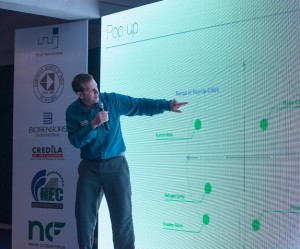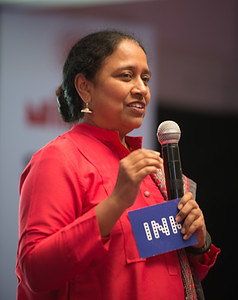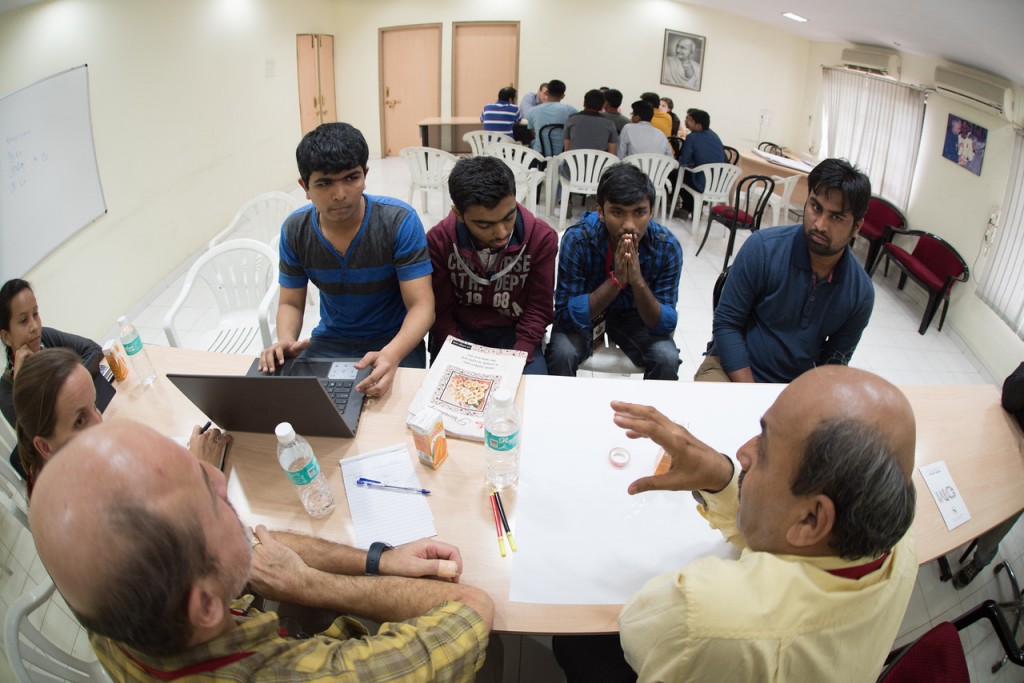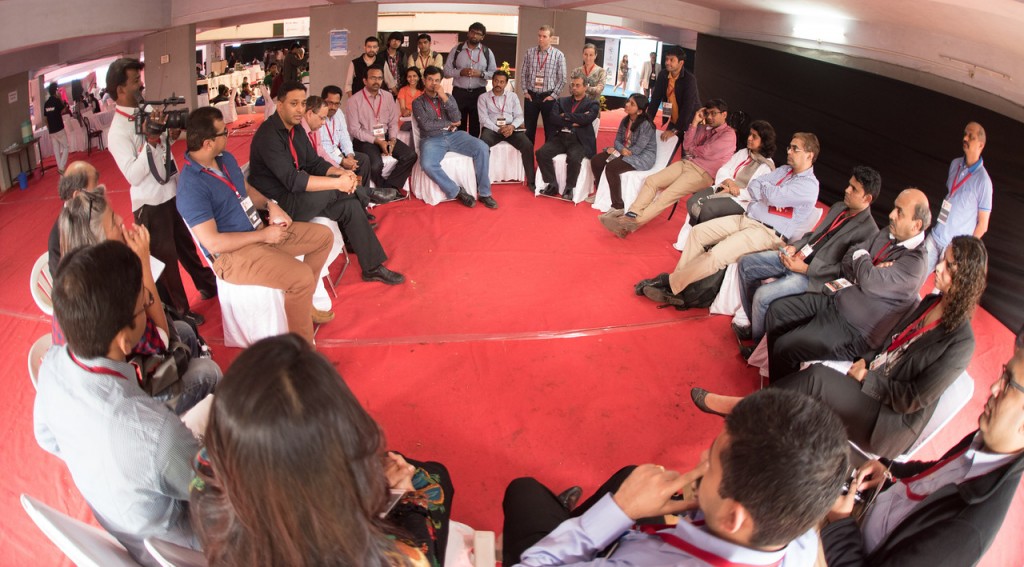The Kumbhathon is a year-round innovation sandbox that has created a platform to identify and address the challenges of the 2015 Kumbh Mela in Nashik, with a broader vision to address similar issues in developing countries across the world. The initiative was conceptualized by Sunil Khabdbahale, an innovator of Nashik and Dr. Ramesh Raskar, Head of Camera Culture Group, MIT Media Lab and has now grown to involve a wide cross section of people both inside and outside Nashik including scientists from MIT, students from across India, experts from industry, the police and Nashik Municipal Corporation among others.
Kumbhathon 4, the fourth flagship ‘Buildathon’ event of this initiative was held in Nasik from January 24-30th 2015. The event aimed to create an accelerated environment to produce tangible results through the joint collaboration of hands-on innovators and industry experts. Stay tuned for information on Kumbhathon5 which will be held in Boston at MIT in April.
Kumbhathon participants are working on the following projects:
Food–Distribution
What? An Uber-like logistical network for food that connects hungry people with quality food suppliers. Such a model could bolster the Indian food industry and potentially translate into a multi-billion dollar service across India that caters to the lower income population.
Why? A 30 million large population needs a way to feed 30 million hungry stomachs. During the Kumbh Mela, large amounts of food are produced and transported to cater to the enormous influx of people. However, customers buying food have little to no information about when the food was cooked, who cooked it or the rating of the person who cooked it.
Cashless Payment
What? A solution for identity-unique cashless micro-transactions with local businesses. The implementation of such a system creates an opportunity for an extensive mobile cloud computing software that can facilitate transactions worth millions of dollars.
Why? Transactions during the Kumbh Mela have largely been cash and coin-based. However, the chaotic situation creates serious threats of thefts by pickpockets or simply misplacing one’s belongings. This enforces an overcautious mentality in people, resulting in them carrying limited amounts of money and thus expenditures in a large way.
Crowd Management
What? A real-time system that will not only show the density distribution of large crowds but also its flow, allowing people to redirect away from saturated areas.
Why? The ultra-high density of people during the Kumbh Mela poses serious risks of congestions and stampedes and thus requires effective crowd management and control solutions.
Epidemic Tracker
What? A system to monitor the health status of people in real time to check and control disease outbreaks. Such a system could enable hospitals and medical agencies to provide individuals with targeted prescriptions and offers for relevant medicines.
Why? The Kumbh Mela is characterized by an enormous, closely interacting population and thus presents real possibilities of potential outbreak of epidemics.
Bike–sharing
What? A system for individuals to receive one-time passcodes that can be used to unlock bikes and other shared resources during the Kumbh Mela.
Why? The vast population size of the Kumbh Mela generates a need for reliable and affordable means of transport.
Local Community Radio
What? A local community radio during the Kumbh Mela to quickly disseminate event information and emergency alerts to the masses and send targeted location specific advertisements.
Why? Bringing order to the chaotic environment of the Kumbh Mela requires an efficient and cost-effective way to communicate important information with the masses.
Shops Online
What? An online system that displays detailed information about shops in a comprehensive and easily accessible way. Such a system would not only be useful to customers but would also open up wide-ranging data-mining possibilities. For instance, one could decide the location to start a local business during the Kumbh based on the location of similar businesses in the proximity. Furthermore, the system could be used as an effective tool for advertisements by displaying sponsored or suggested shops.
Why? Answers to questions such as- What does this shop do? What barbershops are nearby? When do they open? When do they close? aren’t readily available in Tier 2 cities but are a must for a smooth Kumbh Mela.
WikiNasik
What? A Wikipedia site about Nasik that can provide comprehensive and detailed crowd-sourced information about the city.
Why? With 30 million outsiders visiting Nasik for the Kumbh Mela, there is a need for reliable and extensive information about the city.
LiveNasik
What? An online system that dynamically gathers and analyzes streams of data from the transport, health, civic and housing resources in Nasik.
Why? People need access to valuable real-time information such as the number of hospital beds available, the number of taxis plying and the number of available rooms in paying guests etc.
OilExtractor
What? An innovative mechanical project that processes trash from temples to re-extract the oil in a salvageable and reusable form.
Why? During every Kumbh Mela, people donate larges amounts of oil to temples, thousands of liters of which go to waste as trash. A system that can re-utilize this wasted oil is not only of significant economic benefit but is a boon to the environment by largely cutting down the pollution entering the rivers.
GoFoodGo
What? An optimized supply chain for donated and homemade food.
Why? Large amounts of home made-food is cooked and donated to Temples but there is no infrastructure to effectively divert them to those hungry, resulting in large amounts of food wastage.
3DMap
What? A dynamic, real-time digital map that be customized for on-going events, dates, languages and promotions. The smart-phone friendly map could help people navigate Nasik using information specific to their needs and also provide local businesses an efficient platform to advertise and promote their services.
Why? A map is the first thing that a tourist is handed when he reaches his destination. Therefore, the 30 million visitors of Nasik during the Kumbh Mela naturally need one as well.
Collaborator Ulrike Reinhard joined us in Nashik and shared her thoughts on the event in her blog: “What the KUMBHATHON has proven (again) is that all it needs to solve a problem – is a whatsoever environment with good vibes where failure is not an issue, a bunch of people which are open minded and the possibility to build and prototype. It can happen anywhere … and you can start immediately. As we did in a small village in UP or the KUMBHTHON people did in Nashik.”
You can see more pictures and find more information on the Camera Culture Facebook and the MIT Health Tech Facebook.
Thank you to all participants for your hard work and dedication. Stay tuned for upcoming progress on Kumbhathon projects.














